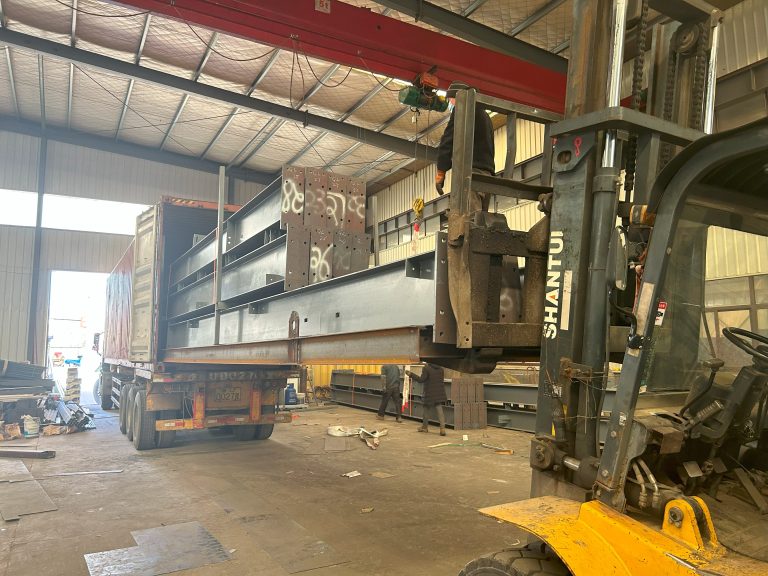Construction simulation and construction plan of steel structure
Inhoudsopgave
Benefits of Using Construction Simulation in Steel Structure Projects
Construction simulation is a valuable tool in the planning and execution of steel structure projects. By creating a virtual model of the construction process, project managers can identify potential issues, optimize schedules, and improve overall efficiency. In this article, we will explore the benefits of using construction simulation in steel structure projects.
One of the key advantages of construction simulation is the ability to identify and address potential problems before they occur. By running simulations of the construction process, project managers can pinpoint areas where conflicts may arise, such as clashes between different components or equipment. This allows for adjustments to be made in the planning phase, saving time and money in the long run.
Additionally, construction simulation can help optimize schedules and resource allocation. By simulating different scenarios, project managers can determine the most efficient way to sequence tasks and allocate resources. This can lead to shorter construction times, reduced costs, and improved overall project outcomes.
Furthermore, construction simulation can improve communication and collaboration among project stakeholders. By creating a visual representation of the construction process, project managers can effectively communicate their plans to team members, subcontractors, and clients. This can help ensure that everyone is on the same page and working towards a common goal.
In addition to these benefits, construction simulation can also help improve safety on construction sites. By identifying potential hazards and risks in the virtual model, project managers can implement safety measures to mitigate these risks before construction begins. This can help prevent accidents and injuries, creating a safer work environment for everyone involved.
Overall, construction simulation is a valuable tool for improving the planning and execution of steel structure projects. By identifying potential issues, optimizing schedules, improving communication, and enhancing safety, construction simulation can help project managers achieve better outcomes and deliver projects on time and within budget.
In conclusion, construction simulation is an essential tool for the successful completion of steel structure projects. By leveraging the power of virtual modeling, project managers can identify and address potential issues, optimize schedules, improve communication, and enhance safety. With these benefits in mind, it is clear that construction simulation is a valuable asset for any construction project.
Step-by-Step Guide to Creating a Construction Plan for Steel Structures
Construction simulation and construction plan of steel structure are essential components in the successful completion of any construction project. Steel structures are widely used in the construction industry due to their durability, strength, and versatility. Creating a detailed construction plan for steel structures is crucial to ensure that the project is completed on time and within budget.
The first step in creating a construction plan for a steel structure is to conduct a thorough site analysis. This involves assessing the site conditions, such as soil type, topography, and access points. Understanding the site conditions will help determine the best location for the steel structure and identify any potential challenges that may arise during construction.
Once the site analysis is complete, the next step is to develop a detailed construction simulation. A construction simulation is a virtual representation of the construction process, which allows project managers to visualize the entire construction process before any work begins. This simulation can help identify potential issues and optimize the construction sequence to improve efficiency and reduce costs.
During the construction simulation, it is important to consider factors such as material availability, equipment requirements, and labor resources. By accurately estimating these factors, project managers can create a realistic construction plan that accounts for all necessary resources and ensures that the project stays on track.
After the construction simulation is complete, the next step is to create a detailed construction plan. This plan should outline the sequence of construction activities, including the order in which tasks will be completed, the timeline for each task, and the resources required for each activity. A well-developed construction plan will help project managers allocate resources effectively, identify potential bottlenecks, and ensure that the project stays on schedule.
In addition to creating a construction plan, project managers should also consider safety measures when working with steel structures. Steel construction can be hazardous, so it is important to implement safety protocols to protect workers and prevent accidents. This may include providing proper training for workers, using appropriate safety equipment, and conducting regular safety inspections throughout the construction process.

Another important aspect of creating a construction plan for steel structures is to consider sustainability. Steel is a highly sustainable building material, as it is 100% recyclable and has a long lifespan. By incorporating sustainable practices into the construction plan, project managers can reduce the environmental impact of the project and create a more sustainable building for future generations.
In conclusion, construction simulation and construction planning are essential steps in the successful completion of steel structure projects. By conducting a thorough site analysis, developing a detailed construction simulation, and creating a comprehensive construction plan, project managers can ensure that the project is completed on time, within budget, and with minimal environmental impact. By following these steps, project managers can create a roadmap for success and deliver high-quality steel structures that meet the needs of their clients.







